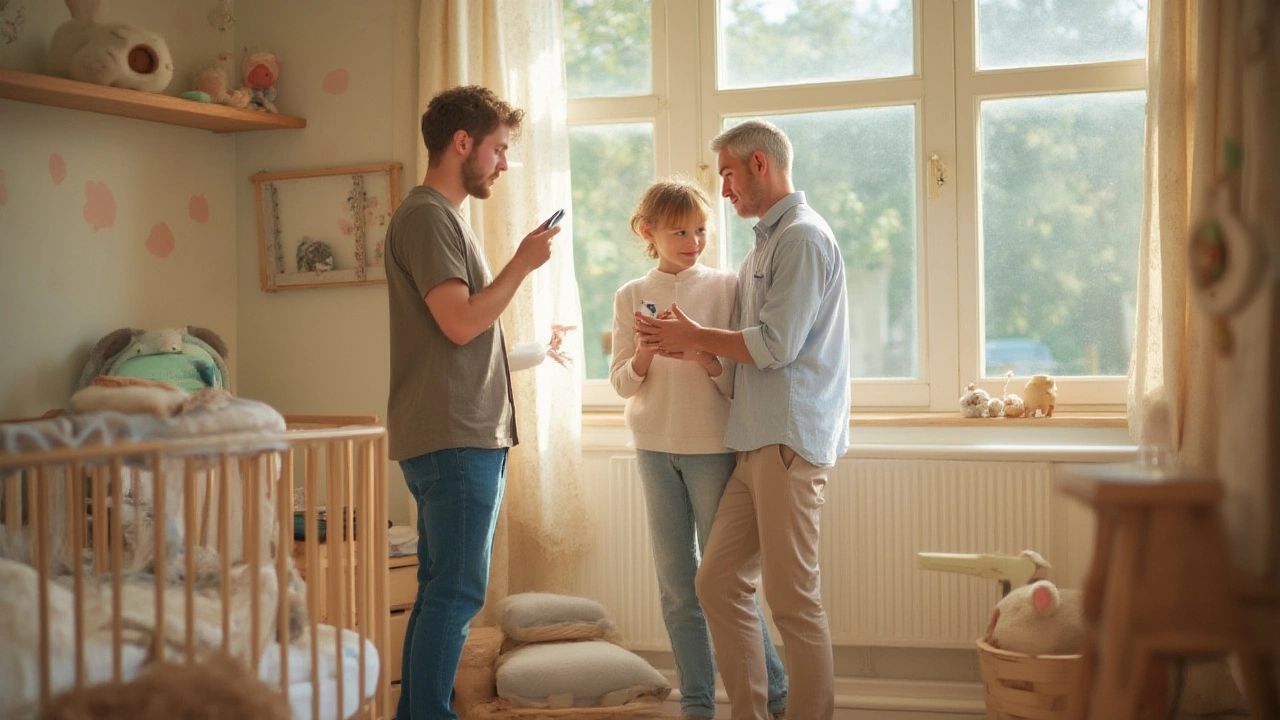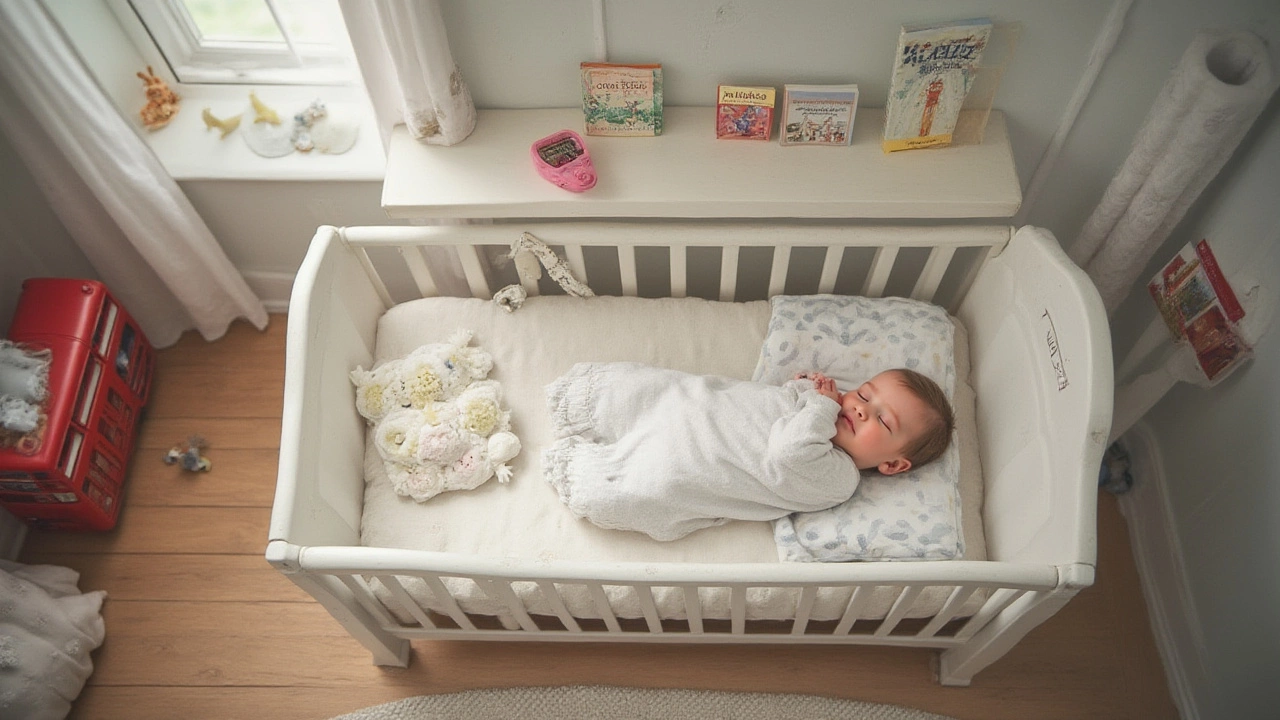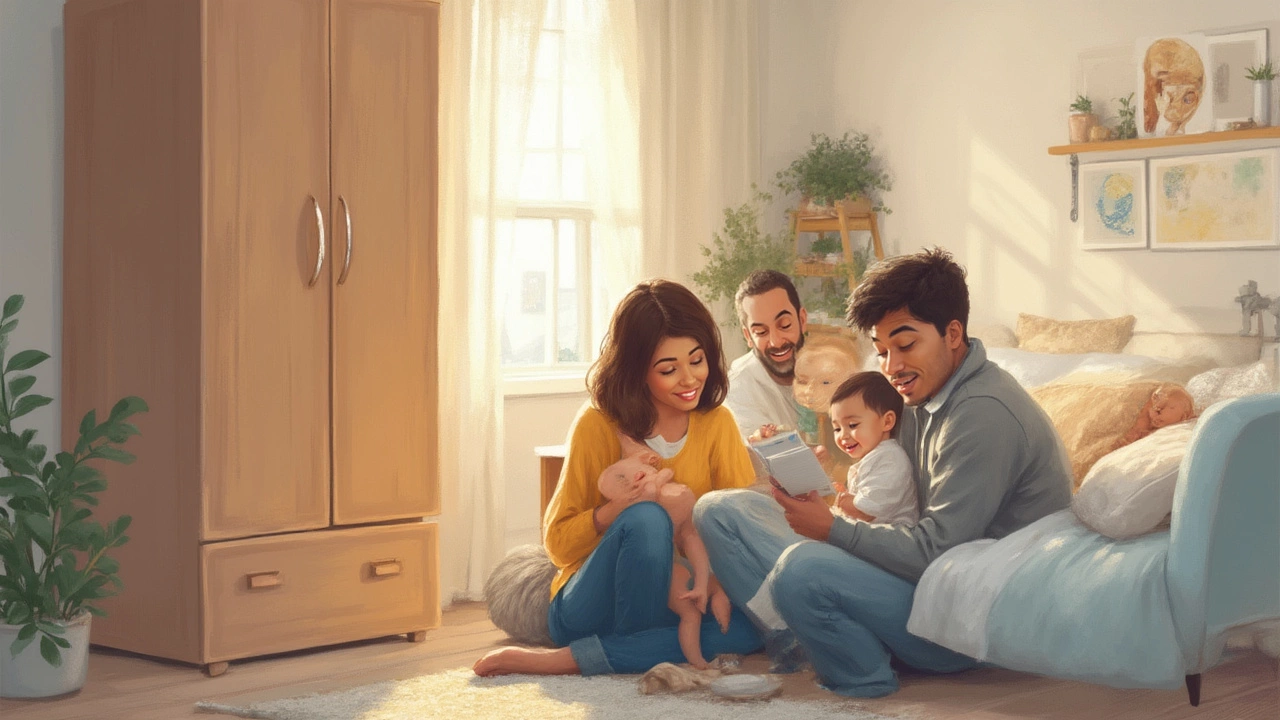Best Places to Put a Baby Monitor: Safe and Smart Placement Tips for Parents

You think picking a baby monitor is tough? Try figuring out where exactly it should go. It’s the parenting equivalent of lining up dominoes—it seems simple, but one bad move and things just feel off. Muffin, my ever-inquisitive cat, loves to spy on the baby monitor screen, which got me thinking that everyone has an opinion on perfect placement. But there’s real science, safety, and even a bit of tech-savvy strategy behind where that monitor ends up. Most new parents put it on the nearest shelf, but you really want the perfect spot to catch every wiggle, whimper, and coo. And let’s be honest: You probably want the camera to avoid accidentally immortalizing midnight snacks or awkward pajama choices.
Why Baby Monitor Placement Matters More Than You Think
Misplacing a baby monitor can mean missing out on vital clues—whether it’s a changed breathing pattern, a toppled pacifier, or general restlessness that can spell trouble. The American Academy of Pediatrics says nearly 3,500 sleep-related infant deaths occur in the US each year. While baby monitors aren’t magic shields, having a good vantage point can give you a visual and audio edge. For video monitors, angles are everything. Too high, and you see only the crib’s wooden bars, like watching a prison documentary instead of a sleeping cherub. Too low or far, and you’re squinting at pixels, guessing if that’s a bunny plushie or your baby’s foot.
There’s also the issue of sudden movement. Babies like to scoot, roll, and stick their limbs in odd positions. If your monitor’s not positioned wisely, you’ll miss those micro-movements that say, "Hey, I’m awake now!" Placement impacts sound clarity too. Placing the audio side too close can pick up constant static or random nursery noises (especially if you, like me, have a cat who likes to purr right into the mic). And then there are all those cords. Bad cord management is a top safety risk, and the CDC and Safe Kids Worldwide both warn about strangulation hazards in nurseries, mostly from window blind cords but every loose wire counts. Bottom line: monitor placement isn’t just about convenience. It’s about safety, clarity, and that precious ability to actually sleep while still keeping tabs on your little one.
Let’s get specific. The AAP and Consumer Product Safety Commission (CPSC) both actually recommend mounting monitors at least 3 feet away from the crib to keep cords out of reach. That’s about the length of an average guitar...or three stretched-out Muffins, if you’re into feline units of measurement. Safety first, always.
Key Factors to Consider Before You Mount or Place a Baby Monitor
So how do you pick the sweet spot? First, you want clear audio and video—no point in spending extra on HD if you’re staring at the closet door. Think about what your priorities are: a bird’s eye view of the whole crib, or just baby’s face, or maybe being able to track them when they start to move around more. Next, scrutinize the layout of your nursery. If your crib lives under a window, you have to think about glare during nap times. If baby’s favorite sleep spot is the corner, you may need a wide-angle camera.
Cord safety is huge. Keep any wires 3 feet or more away from the crib and anything your baby could stand on (bumpers, mobiles, or a pile of future laundry). Opt for wall mounting when possible—almost every pediatric safety group warns parents about dangling cords being a strangulation risk. Night vision and ambient light sensitivity matter, too. Monitors with IR night vision need a clear, unobstructed view—not half-blocked by the mobile or stuffed animals. Glare from windows during the day can mess with video quality, so scoping out how sunlight tracks through the room can help you adjust angles or spots.
Now, the WiFi debate. Wireless monitors are trendy, but signal strength is only as good as your home’s setup. Placing the monitor near a heavy electrical device or in a room with thick walls can weaken the connection and leave you watching a buffering feed instead of a sleeping newborn. Some monitors need a clear path back to the router for smooth streaming, especially if you want remote viewing from your phone, or, like me, check in while at work or (guiltily) out with friends.
- Keep the monitor out of direct sunlight. Some devices overheat, and baby’s comfort matters more than a clear image of sparkly unicorn curtains.
- Angle down toward the mattress, not across or up at the ceiling. The best view is often slightly above baby’s head, like a gentle snooping guardian angel.
- Don’t place it near noisy vents, air purifiers, or white noise machines. The background sound can drown out your baby’s tiny sighs or splutters.
Your home’s layout, furniture choices, and even pets (hello, Muffin!) can play a role in the actual spot. Some cats love monitor wires, some toddlers love to grab at camera stands, and sometimes you just realize that your carefully picked wall mount faces directly into the closet, capturing none of the action. Test, adjust, and test again until you genuinely feel that mix of safety and reassurance every parent deserves.

The Best Places to Put a Baby Monitor: Options for Every Room Type
The right place can vary a lot depending on your nursery setup, monitor type, and even your baby’s age and stage. Here’s a quick table of popular monitor placement spots, with pros and cons for each:
| Spot | Pros | Cons |
|---|---|---|
| Wall above crib, angled down | Perfect view, safe cords, stable | Needs wall mounts, harder to adjust |
| Shelf across from crib | Easy placement, good angle | Possible cord risks, needs right shelf height |
| Corner ceiling mount | Wide view, hard to tamper | Challenging to install, some distortion |
| Tripod on dresser | Flexible, easy to move | Tipped by pets/toddlers, cord management needed |
| Window ledge (if safe and away from baby) | Good lighting, side-angle view | Glare issues, not always childproof |
If your monitor comes with a wall mount, use it. Placing the camera about three to six feet from the crib, angled downward, is safest and captures everything important. On a bookshelf, check the height—too high, and you see the top of your baby’s head only; too low, and you mostly see bars. For audio-only units, somewhere mid-room away from vents and loud electronics is usually best. On-the-go or visiting grandma? Flexible clamp monitors can attach to a bookshelf, lamp, or even a sturdy standing plant—just always keep cords and plugs well out of reach.
My own monitor started on a dresser, but Muffin turned it into her throne. After I caught about twelve hours' worth of cat closeups, I moved it to a secured wall mount and instantly got a better view and way fewer interruptions (unless Muffin leaps for the lens with Olympic ambition).
Common Mistakes and How to Avoid Them
The number one mistake: putting the monitor too close to the crib. It makes parents feel "safer," but the closer the device is, the bigger the cord danger. The CPSC has issued warnings about babies wrapping monitor cords or falling devices—even with seemingly "secure" placements, gravity and restless toddlers are a dangerous combo.
Lots of folks tuck a monitor into a crib corner (where it’s super easy to see the baby’s face), but this is risky and not recommended by any safety organization. And don’t forget about signal drop-out. Say your router is in another room with thick walls in between—it might look like you’re connected, but all you’re seeing is buffering, not your sleeping baby. If you use WiFi models, run a connection test at different times of day (and night, since appliances and neighbors’ WiFi can interfere).
Background noise covers are big culprits. White noise machines are amazing, but if your monitor is right next to one, you’re going to hear wave sounds, not a wailing baby. And if you, like me, have a pet—double-check the view after monitor setup. You’d be amazed at how many parents get 80% cat or dog on their feed instead of the baby. Safety stickers are your friend: mark a "no cord" zone with bright tape or stickers to remind yourself never to let cords drift into little hands' reach. Some parents swap to wireless battery-operated monitors for this reason, especially if they're in a rental or can't drill into walls. But always check battery life and do regular charge checks—a dead monitor's no use to anybody at 2 AM.
Don’t fall into the trap of "set it and forget it." As your baby grows, stands, or sits, you’ll need to move the camera or adjust angles. Their sleep patterns (sadly) change, and so do their preferences for hanging out at one end of the crib or another. Make it a monthly habit: review your monitor setup, test audio, and tighten up those safety measures.

Advanced Tips for Peace of Mind and Better Monitoring
Let’s get clever. Got twins or a toddler and a newborn? Some monitors let you split screens, so set up two units—one angled at each crib, but both visible from your main monitor base. Integrate with smart home tech: if you use Google Home or Alexa, some monitors feed into your home system for hands-free audio checks or automatic notifications. Mount the camera upside-down (if the model allows) for unique angles without straining wires.
If you're in a tiny room or apartment, mirrors can cast a wider reflection. Position a safe, unbreakable mirror strategically to allow your monitor to "see around" the corner—especially helpful for oddly shaped nurseries. Solar shades on windows can help avoid glare on the feed, and blackout curtains let IR night vision work its magic without any weird flashes of outside light. For travel, those all-in-one wearable baby monitors (placed on the baby’s sock or onesie) work differently, but mix them with an audio unit for double coverage.
Here’s something people forget: Always check your baby monitor permissions if it's wireless. To stop anyone creepy from spying, change the default password and check for software updates every couple weeks. A 2023 report by Consumer Reports showed that nearly 30% of smart monitors they checked had poor default security—yikes. Double-verify privacy settings, especially if you’re sharing access with a babysitter or grandparents.
If you live somewhere loud (construction, busy street, next-door neighbor with a tuba), try monitor models with sound filtering. These filter out background hums and only alert you for baby-led sounds. Mount your monitor away from vents, radiators, and major electrical panels—they can all introduce weird static. Want a visual "sleep tracker?" Try using a sticky note or marker dot on the monitor’s live feed to keep tabs on where your baby usually moves at night. You’ll spot patterns and know when it’s time to adjust placement again.
If your cat’s like Muffin and insists on being the star, get creative: a cat-resistant wall mount or a cord channel painted to match the room can keep pets at bay, so you actually see what you’re supposed to see. Your baby monitor may not be a substitute for physically checking on your baby (there’s no tech for those midnight snuggles yet), but with the right placement, you’ll balance peace of mind with real safety, every single night.